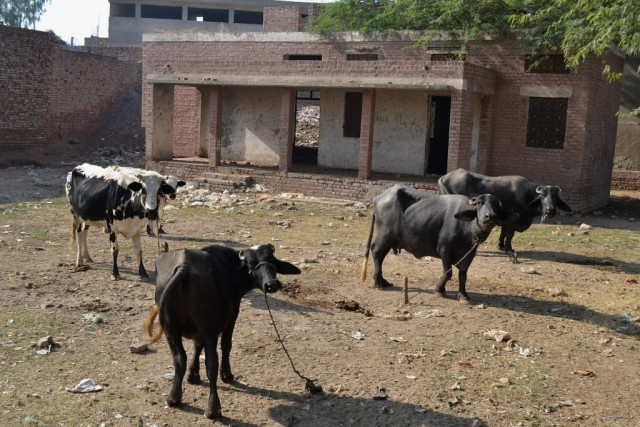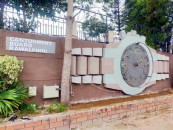One man compels SC to crackdown on ghost schools
A total of 2,088 ghost schools were unveiled for the first time.

The report further showed that Sindh had the highest number of ghost schools — 1,962 — of which 419 had been illegally occupied by powerful locals. PHOTO: Express/File.
It was the commitment of one man from a remote village in Sindh that led to a remarkable Supreme Court (SC) decision that unveiled the shroud from ghost schools all over the country.
Considering it his utmost responsibility to highlight the pathetic performance of the education ministry in his province’s government, Rehmatullah Bilal, a social activist with Rural Development Society and Alif Ailan in Matyari, took the opportunity fate offered him when the SC took suo motu notice over a picture published in local daily that showed girls taking classes in a Gujranwala graveyard.
The picture was sent in April 2012 by a US-based Pakistani professor and sought to call the chief justice’s (CJ) attention to the grim state of Pakistan’s public education system. Resultantly, the CJ issued letters to the Punjab chief secretary and education secretary asking them to detail the causes of the issue.
Seeing the apex court’s interest, Bilal undertook research regarding ghost schools operating in his hometown and adjacent areas. After compiling a detailed report, he submitted it to the Supreme Court in January 2013.
“When I read about CJ’s notice, I felt it was time to raise our voice against the awful education situation in Sindh,” he told The Express Tribune following the detailed judgment in the case on November 13.
The report broadened the spectrum of the SC’s interest from one specific case to seeking comprehensive details from all judicial officers and members of the bars of all the provinces and Islamabad Capital Territory.
“It was our report, based on eye-popping figures about non-functional ghost schools as well as those illegally-occupied by influential locals that compelled the court to order a countrywide investigation of such places,” he added.
A total of 2,088 ghost schools were unveiled for the first time. According to the report submitted to the apex court, 48 such schools were located in Bilal’s area of origin. The report further showed that Sindh had the highest number of such schools — 1,962 — of which 419 had been illegally occupied by powerful locals. Meanwhile, a staggering 4,285 schools turned out to be non-functional.
For his efforts, Bilal came face-to-face with people who harassed and threatened him for reporting the facts, but his dedication to the cause remained undeterred.
“When Sindh’s education department submitted its initial report, it downplayed the figures. I informed the apex court of the tampering, as it did not hold anything in common with the ground reality,” he said.
In February this year, the chief justice ordered a full-length inquiry into the country’s schools while directing judicial officers to let Bilal assist them using the data he had painstakingly collected — a process during which a fellow volunteer, Manghwar, was brutally beaten for informing him about schools taken over by some influential people in Sanghar, an area where Pir Pagara calls the shots. The area is also the birthplace and hometown of former premier Raja Pervez Ashraf.
Published in The Express Tribune, December 9th, 2013.



















COMMENTS
Comments are moderated and generally will be posted if they are on-topic and not abusive.
For more information, please see our Comments FAQ